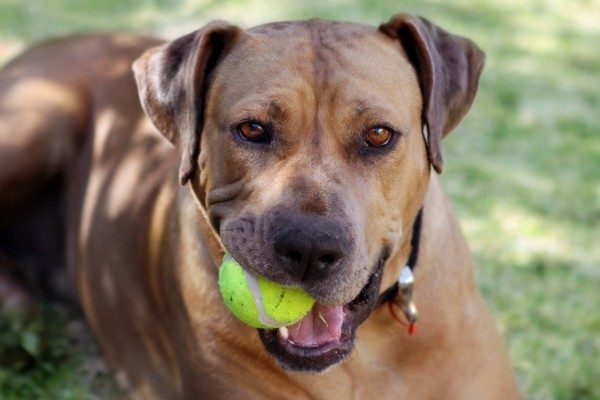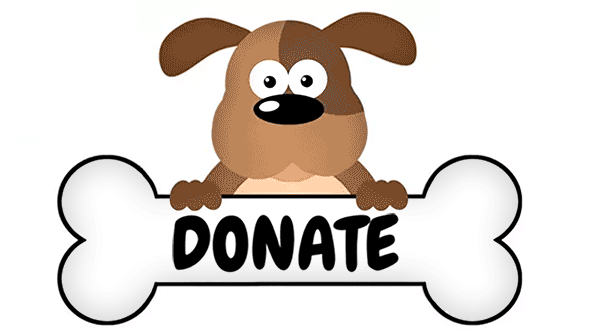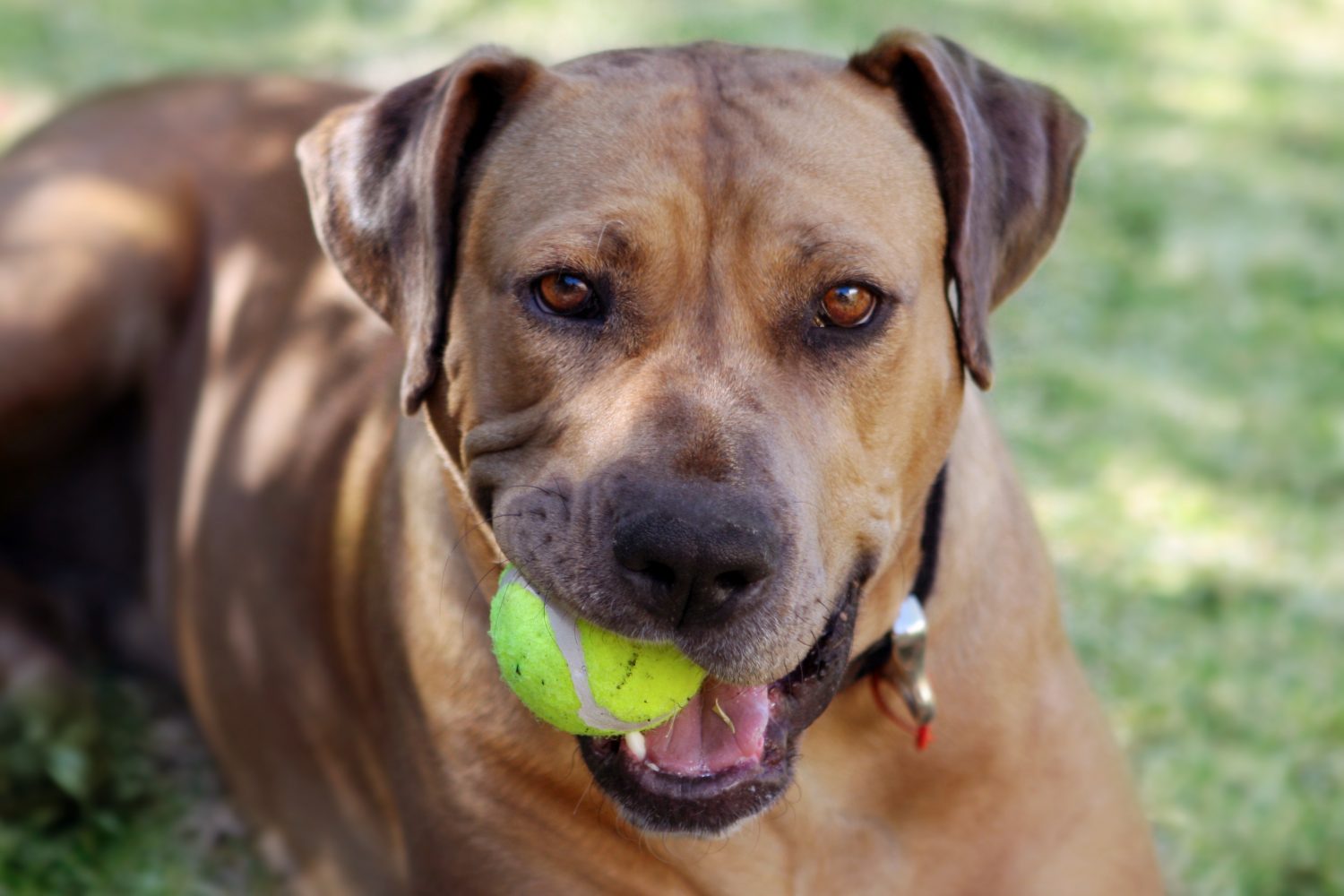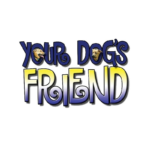How Playing 20 Questions Improves Your Dog Training Skills

You ready to play?
There’s a super powerful dog training technique that most average dog owners (and even some dog trainers!) have a hard time understanding. In this article, I’m going to hopefully turn on the light switch so you can have the a-ha moment and be able to harness this technique to teach your dog all sorts of fun and useful behaviors.
In our classes, we talk about various ways that you can teach your dog a new behavior without the need for harsh corrections or punishment. In case you haven’t been to one of our classes, here’s a quick review of those methods:
- Capturing: When the dog offers the behavior you want, click and treat.
- Luring: Use a treat to move the dog into the position you want, then click and treat.
- Shaping: Click and treat your dog for each tiny step toward the correct behavior.
Of these four methods, shaping is the one that confuses people the most.
“So I just stand here?” (Yes.)
“My dog is sitting and staring at me.” (Give him time.)
“This isn’t working!” (Give it time.)
“Can’t I nudge him toward the behavior?” (Nope. That’s luring. We’re shaping!)
“So I click and treat when?” (Whenever your dog does a small part of the behavior you want.)
“This seems like I’m clicking and treating for nothing.” (It’s almost nothing, but definitely on the way to something!)
You Have Played Shaping Games. Yes, You!
Let’s leave the dog behind for a moment and talk about your childhood. (Don’t worry, we won’t get Freudian!)
Did you ever play the game 20 Questions? If so, you’ve played a shaping game!
Example: Debra and Bob are playing 20 Questions.
Bob:
Okay, I know what the object is.
Debra:
Is it alive?
Bob:
No.
Debra:
Is it in the training center?
Bob:
Yes.
Debra:
Is it blue?
Bob:
No.
Debra:
Is it a piece of agility equipment?
Bob:
No.
Debra:
Is it something a dog wears?
Bob:
No.
Debra:
Is it something a dog would play with?
Bob:
Yes.
Debra:
Is it something you throw?
Bob:
Yes.
Debra:
Is it a frisbee?
Bob:
No.
Debra:
Is it a ball?
Bob:
Yes.
Debra:
Is it a tennis ball?
Bob:
Yes! You got it!
During this game, Bob is using shaping to lead Debra to the correct answer. His Yes or No answers give her feedback and she uses that feedback to refine her line of questioning until she correctly identifies the tennis ball.
Let’s look at it again but add Debra’s thoughts to the mix.
20 Questions + Debra’s Thought Process
Bob:
Okay, I know what the object is.
Debra thinks of the first step to narrowing down the name of the object.
Debra:
Is it alive?
Bob:
No.
Debra now knows it’s an inanimate object. Maybe it’s something in the room.
Debra:
Is it in the training center?
Bob:
Yes.
Debra glances around the room. There are a lot of blue things: the floor, the pods, the A-frame, the dog walk, the teeter.
Debra:
Is it blue?
Bob:
No.
Debra now looks for objects that aren’t blue. There are lots of agility obstacles that are not blue.
Debra:
Is it a piece of agility equipment?
Bob:
No.
Debra scans to the other side of the room and sees a harness hanging on the wall.
Debra:
Is it something a dog wears?
Bob:
No.
Debra keeps looking and sees the container of toys.
Debra:
Is it something a dog would play with?
Bob:
Yes.
Debra thinks about the different types of toys in the container.
Debra:
Is it something you throw?
Bob:
Yes.
Debra is getting excited because there are only a couple toys that are for throwing!
Debra:
Is it a frisbee?
Bob:
No.
So close! It has to be a ball.
Debra:
Is it a ball?
Bob:
Yes.
Yes! Debra goes one step further.
Debra:
Is it a tennis ball?
Bob:
Yes! You got it!
Hooray! Debra wins!
Using Shaping to Train Your Dog
The 20 Questions game is an imperfect analogy since Debra knows that her goal is to identify the object Bob is thinking about. Obviously, your dog does not know the point of the game in advance. Your dog does know that he gets a click and a treat when he’s done something you like. This positive reinforcement increases the probability that he will repeat the behavior you like.
Unlike Bob, who gives a non-reward marker (“No”) to Debra when she is incorrect, we will simply wait for the dog to offer a behavior that is a “Yes.”
Your steps for shaping a new behavior:
- Identify the end behavior you want. (Ex: Dog blows bubbles under water.)
- Make a list and break that final behavior up into tiny steps. (Ex: Dog puts face in bucket.)
- Go back and break it up into even smaller steps. (Ex: Dog looks at bucket.)
- Wait for your dog to offer a behavior that is one of the tiny steps. (Ex: Move toward bucket. Look at bucket. Smell bucket.)
- Click and treat your dog.
- Continue to reward that behavior, and give your dog a jackpot (many small treats in quick succession) when he offers the next step of the behavior. (Ex: Dog holds nose on the bottom of the bucket.)
- Now hold out for the new step of the behavior to click and treat.
- Repeat until you get to the final behavior.
Train Your Dog to Blow Bubbles Under Water Using Shaping
See the process in action with this great video from ShapeFest on YouTube.
More Resources
Training a Dog to Flip Open a Picnic Basket Using Shaping by Pat Miller
Shape a “Crawl Under” Trick by kikopup
Introduction to Shaping by Karen Pryor





